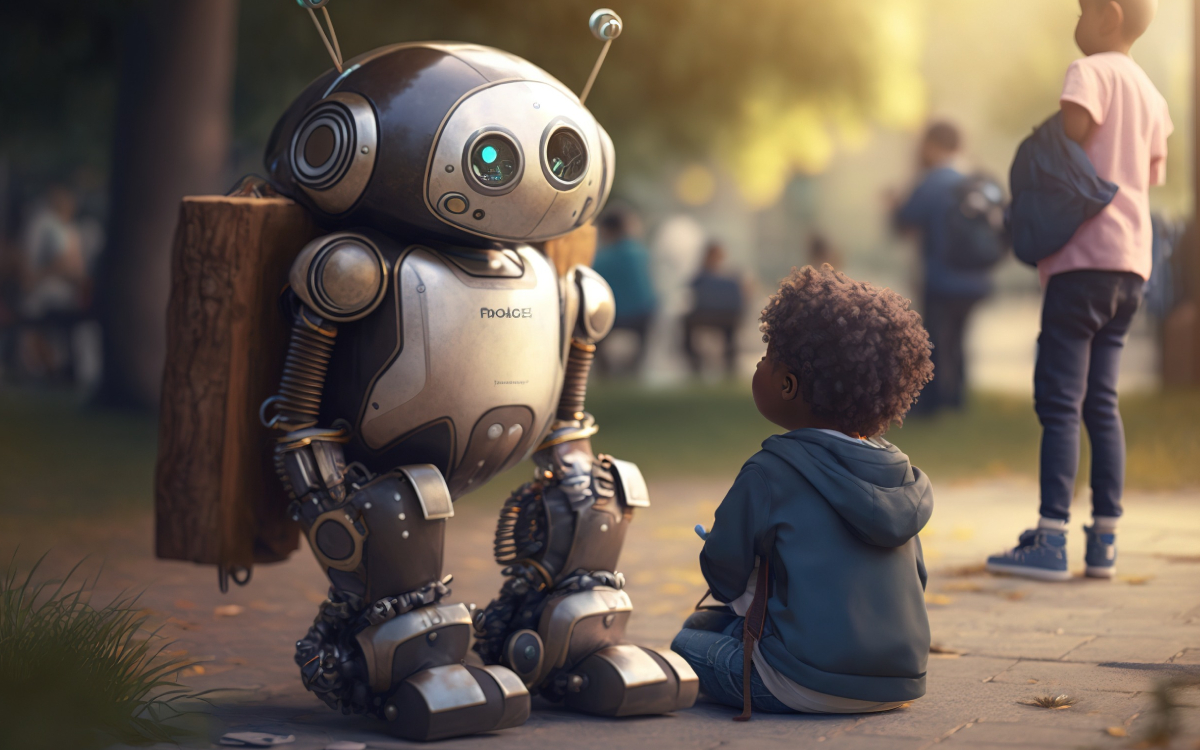A recent study demonstrates how easily children outperform artificial intelligences when it comes to creativity. When presented with a problem that they cannot solve through logic or patterns, AIs fail most of the time.

It’s hard to deny that in just a few years, artificial intelligence has gone from a sweet science fiction dream to a reality that is shaking up our society. Results sometimes so astonishing that it is easy to imagine a robot apocalypse. But let those who are most worried be reassured: we are still far from it. According to a recent study, even children as young as 4 years old pose a greater threat.
For a recent study, researchers from the University of California wanted to test the level of “creativity” of AIs, then compare it to that of children aged 3 to 7 years old. More concretely, the researchers sought to find out whether AIs are capable of producing new ideas, like humans, rather than following preconceived patterns.
Artificial intelligences are seriously lacking in creativity
To do this, the researchers placed a group of children in front of various tools, the idea being to find out if the latter were capable of accomplishing certain tasks, or even of diverting the initial use of these tools. For example, researchers asked children to choose between a ruler, a teapot lid and a frying pan to draw a circle. In a large majority of cases (85%), children chose the teapot lid.
On the same subject —This AI transforms your sketches into websites in seconds, no need to know how to program
On the AI side, the result was much more mixed. Most of them kept opting for the rule. Only GPT-4 recorded a 76% pass score. Why choose a ruler to draw a circle? According to the researchers, the reason lies in the functioning of AI. For the latter, the ruler is a tool that allows you to trace shapes, unlike the lid and the pan. The circle being a shape, then the ruler must be able to draw a circle.
An experiment which clearly shows that AIs do not necessarily understand what is asked of them, but rather react to a group of data by looking for the most statistically probable matches. “The discovery of new uses in everyday tools does not consist of finding the statistically closest neighbor based on lexical co-occurrence models”, can we read in the study. “Rather, it is about appreciating the more abstract functional analogies and causal relationships between objects that do not necessarily belong to the same category or are not associated in the text. »


To explore this notion of cause and effect further, the researchers developed another experiment. This consisted of placing each group in front of a “blicket detector”, a device which is activated and plays music when placed on other specific objects. The objective is then to determine which objects are blickets and which are not.
“Even 4-year-olds spontaneously acted on the systems and discovered their structure — they understood what the flickets were and used them to move the machine,” explain the researchers. AIs, for their part, despite a considerable learning time, “had difficulty producing relevant causal structures.”
Of course, it is important to emphasize that creativity, and intelligence in general, is not measured solely by how well you solve a problem. AIs are infinitely more competent than humans in certain areas, but only when those areas involve logic. The domination of robots is therefore still far away.
Source: Sage Journals
